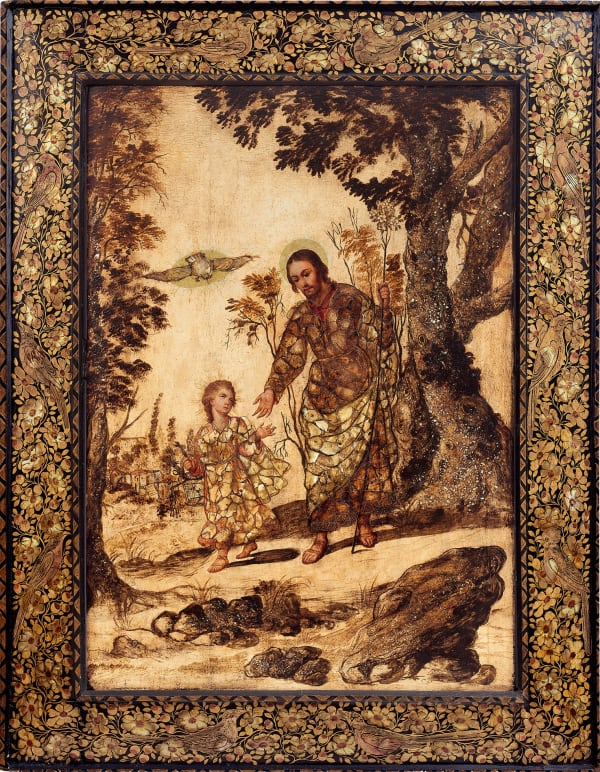Miguel González and Juan González
Saint Martin and the Beggar, 17th-18th century
Enconchado, oil and mother of-pearl, inlay on panel.
86 x 60 cm
%3Cdiv%20class%3D%22artist%22%3EMiguel%20Gonz%C3%A1lez%20and%20Juan%20Gonz%C3%A1lez%3C/div%3E%3Cdiv%20class%3D%22title_and_year%22%3E%3Cspan%20class%3D%22title_and_year_title%22%3ESaint%20Martin%20and%20the%20Beggar%3C/span%3E%2C%20%3Cspan%20class%3D%22title_and_year_year%22%3E17th-18th%20century%3C/span%3E%3C/div%3E%3Cdiv%20class%3D%22medium%22%3EEnconchado%2C%20oil%20and%20mother%20of-pearl%2C%20inlay%20on%20panel.%3C/div%3E%3Cdiv%20class%3D%22dimensions%22%3E86%20x%2060%20cm%3C/div%3E
The St. Martin on Horseback, without doubt a unique piece in terms of its subject, as there is no other recorded Mexican enconchado depicting what is a particularly interesting scene from a historical and iconographic point of view.
The figure of St. Martin on horseback is especially important in Latin America in general, and in New Spain in particular, as he was considered the patron saint of a number of the region’s territories, among which it is worth highlighting: Acayucan, located today in the State of Veracruz; San Martín Texmelucan in the State of Puebla, and Tixtla in the latter-day State of Guerrero.
Read Essay

